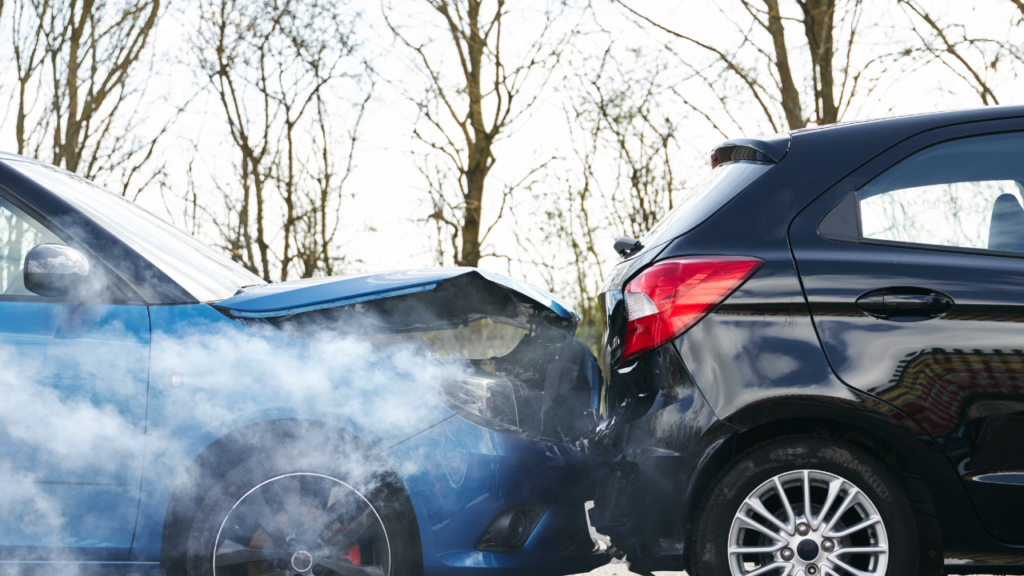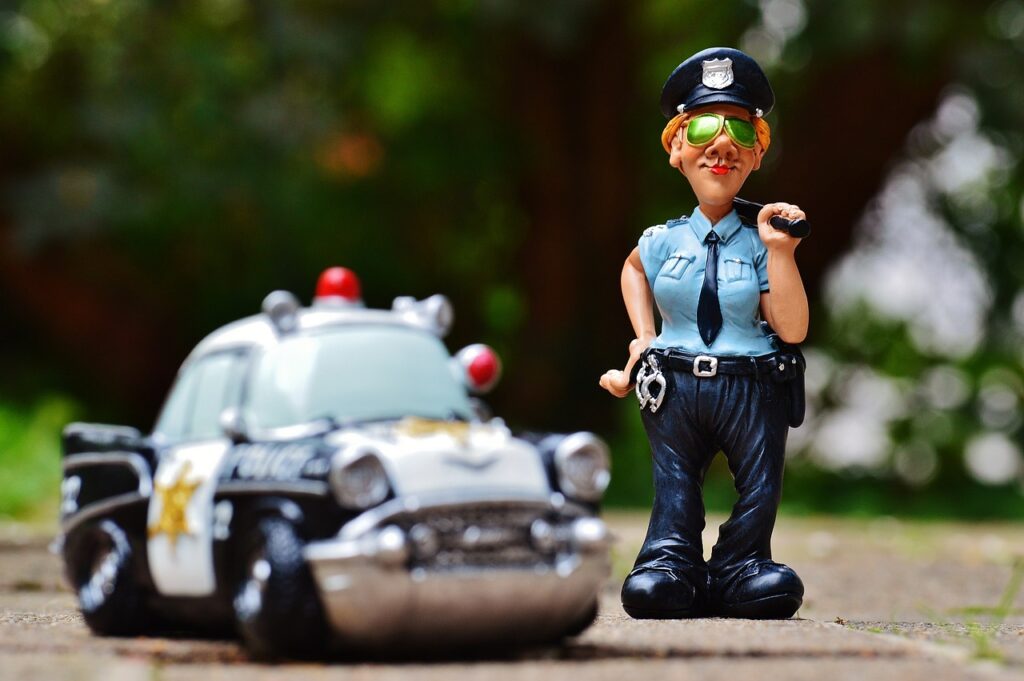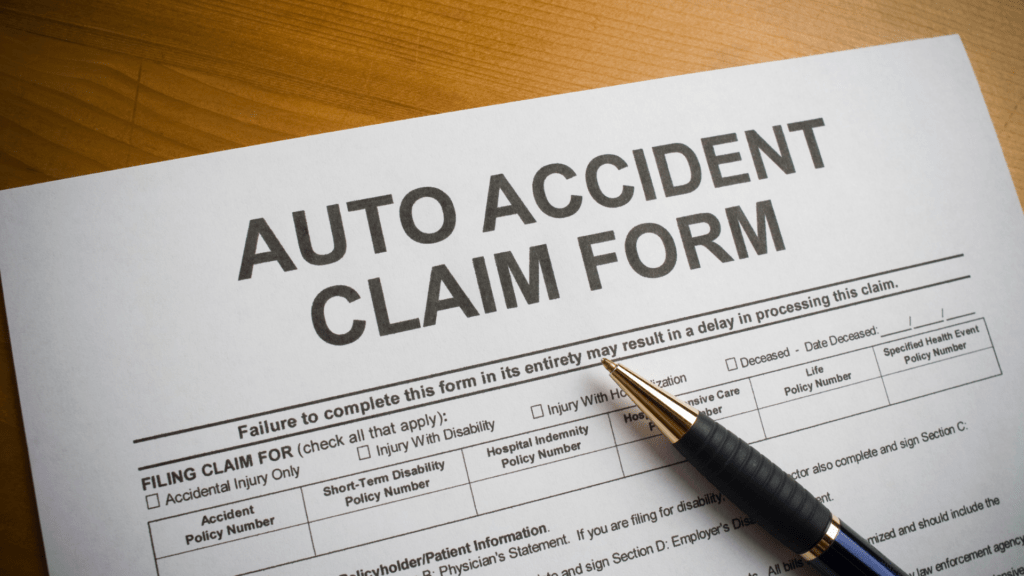Page Contents
1. Introduction
The importance of reporting reckless drivers is emphasized in the introduction. Reactive approaches alone cannot ensure your safety from reckless drivers on the road. When you report a reckless driver to law enforcement or another authority, you’re taking a proactive step in preventing any accidents that driver may cause on the road. In this way, reporting serves to help the community at large as well as protect your individual safety. Encouragingly, many states like Maryland have an easy online way to report reckless drivers.
Further reading: What Happens When You are At Fault for a Car Accident?
And if you have been involved in an automobile accident, a car accident lawyer may advise you to report a reckless driver if it was a contributing factor in the accident. This not only helps the injured person seek the compensation they need for their recovery, but it can also help prevent future accidents as well. It is illegal to drive in a way that’s dangerous or threatening to other people on the road. Reckless driving is both a major traffic violation and a criminal misdemeanor.
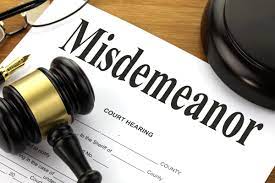
Every state has some type of “driving in willful or wanton disregard for the safety of others” violation. It is a serious charge and illustrates just how important it is to report a reckless driver when you see one. Culturally, there is a perception that once someone gets behind the wheel of a car, they are in their own mobile kingdom and don’t have to answer to anyone else on the road. This could not be farther from the truth.
The road requires cooperation and attention to common safety rules in order for everyone to get to their destinations safely. When a reckless driver gets away with dangerous driving without interference, this perpetuates a culture of permission around irresponsible driving practices. If someone is caught and convicted of reckless driving, there are many potential consequences such as fines, jail time, and a permanent criminal record. A driver may also have their license suspended.
If a person is hurt, these penalties can be much more severe. So, reporting a reckless driver is not only in the best interest of public safety, it is also a choice that empowers you to be an active agent in your own and other people’s wellbeing.
1.1. The importance of reporting reckless drivers
Reporting reckless drivers helps to ensure a safer environment for everyone on the road. Reckless drivers are a threat to the safety of everyone on the road. By not reporting them, their behavior goes unchecked, and they may continue to endanger others. It is important to protect the community and society from such endangering behavior, and reporting reckless drivers is a step towards achieving this.
Further reading: Accident attorney guide to can someone else drive my car?
There are several reasons why reporting reckless drivers is crucial. Firstly, it helps to ensure that the concerned driver is held accountable for his or her behavior. Penalties such as fines, imprisonment, and license suspension are effective to deter the affected driver from repeating the reckless behavior. Secondly, reporting a reckless driver helps to facilitate the identification and interception of drunk or drugged drivers. Law enforcement resources such as police, sobriety checkpoints, toxicology laboratories and treatment facilities may be allocated to handle cases involving arrested drivers.
This will help to reduce the impacts of drunk driving on the road. With the rise of technology, most instances of reckless driving today are captured on camera and subsequently uploaded to social media or other platforms. This in a way will raise awareness of the public concerning road safety and the impacts of unsafe driving behaviors on the road. Jalopnik, a website that focuses on cars, was reported to have posted dash cam footages showing road safety hazards posed by unsafe driving.
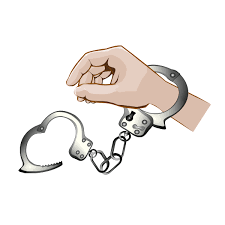
Through education and outreach directed by the Law Enforcement and Safety Services Section, it is believed that such footages will reduce crashes on the road. The steady increase in drunk driving in Pennsylvania has caused a far-reaching concern in the state, as mentioned in the Pittsburgh Post Gazette. It has become a serious public health problem, and reporting drunk drivers is seen as immensely valuable.
2. Reporting a reckless driver
When reporting a reckless driver, it’s important to have as much information about the incident as possible. If you’re able to do so safely, try to note down the make, model, colour, and license plate of the vehicle. Don’t forget to also write down the location, the time and date you saw the vehicle, and a description of the driver.
This information will be useful when contacting the authorities – using the non-emergency police number is recommended. You can also report dangerous driving using the government’s “Report a road incident” service. You’ll need to have a description of the incident, the registration of the vehicles involved, and a description of the driver.
Further reading: How to find out if a hit-and-run was reported?
If you’re not able to provide some of the information required, the government provides an alternative online contact method. Be prepared to explain the details of the report – the staff member taking your report will document the information and might also ask further questions. You will be asked for your details, and the police might have to contact you during their own investigations.
The information you give will help the authorities take dangerous drivers off the road and ultimately help to keep road users safe. If you’re worried that a dangerous driver is an immediate threat to other road users, you should call 999 to report the driver as soon as you can.

However, don’t use a mobile phone while you are driving to make a report. Instead, stop in a safe place and switch off your engine before you make the call. Using a mobile phone while driving is dangerous, and it is also illegal to use a hand-held phone or similar device while driving. Always find the opportunity to pull over before using a phone for anything other than calling the emergency services.
2.1. Gathering information about the incident
After making sure that everyone in the car is fine and securing the safety in the first place, the essay should prompt you to start gathering information about the incident. For example, it tells the reader to take note of the driver’s appearance, including details such as the suspect’s age, sex, race, height, weight, hair length, facial hair, glasses and any particularities, such as tattoos, that will make this driver stand out in a crowd.
Also, it requires you to note the driver’s clothes, shoes and any accessories, such as glasses or hats, in the description as well. Moreover, the essay specifically asks you to note any damages on the suspect’s car and its model, color and license plate number too. Furthermore, it tells you to find other people who are on the scene and get their names, phone numbers and written statements about what they saw and heard when the incident occurred.
The essay keeps asking you to take notice of each and every minor detail of the driver and the vehicle and to find other people and collect their written statements about what they saw and heard because these are the only evidence that you and the people who are willing to help you can keep and show to the police, so that the police will be able to successfully find and charge the suspect.
This fact-based and practical explanation would make the reader understand that the effectiveness of reporting a reckless driver largely depends on the quality of the information provided to the police and therefore emphasizes the importance of each step while urging the reader to take real action. It does not irrationally stir the reader up with anger but rather, it gives the reader a task to do and channels the negative energy in a more positive way to get the positive outcome – successfully having the suspect arrested.
This is a good use of the persuasive technique, ‘direct action’, as it does not incite violence or any illegal activities but encourages the reader to achieve a goal by taking some practical steps. Well, the practice and its success are also shown for various times in the article that maybe someone will feel reluctant to call the police or the police may not take any action at last, so the writer’s repeated emphasis in the article kind of acts as a solid proof to make her point valid.
Also, by using this persuasive technique, I think it really relates to the main targeting audience – the general public who have little knowledge on the procedures after reporting a reckless driver.
To report a reckless driver, call the police department and provide the telephone dispatcher with the location, direction of travel, and a description of the vehicle. You may also contact the city police, the county police, or the Maryland State Police depending on where the event takes place. You may remain anonymous and do not have to appear in court. The information will be kept confidential.
Further reading: How long does it take for the police to find you after a hit and run?
Any complaints of retaliation for reporting a reckless driver should be reported to the Maryland State Police or other law enforcement authorities that have jurisdiction in the matter. Retaliation may be noted as a separate offense by law enforcement. For more information about the laws that protect you against retaliation for reporting a reckless driver, please refer to the Maryland Transportation Article Section 21-506.
2.3. Providing a detailed description of the driver and vehicle
After contacting the 911 or the police, it is the duty of the caller to provide as much detailed information as possible about the driver and the vehicle to the dispatch and the officers. The purpose of collecting the detailed description of the driver and vehicle is to help the officers to investigate and follow-up the case and to take appropriate actions against the reckless driver.
While the caller may not be able to provide all the information sought, it is important to provide as much of the information as possible. Firstly, the caller should provide a detailed description of the driver, including general physical description such as age, sex, race, hair color, hair length, eye color, weight, height, mustache or beard and glasses; any distinguish marks such as accent, scars, tattoos or amputations; and clothing description such as hat, shirt color and lower body garments.
It is important to explain to the officers how the information about the driver has been obtained, for example, based on the time spent side by side at a traffic light. Secondly, the caller should provide a detailed description of the driver’s driving behavior, including how the reckless driving was started, lane change pattern and any driving actions, for example, braking or swerving. The caller may want to show the officers any dash cam or cell phone videos that have captured the reckless driving.
Finally, the caller should provide a comprehensive description of the vehicle, including license plate number, make, model, year, color and possible modification such as bumper stickers or dents and any damage, including the location. Nowadays, newer cars with digital tag can be reported; some states, such as Virginia, also allow partial tag reporting. However, the description of the vehicle in the narrative plays a very important role because the officers may not have enough time to verify the license plate or the tag number before the reckless vehicle disappears. By contrast, an experienced attorney says that a comprehensive narrative may at times suffice to identify the driver and the vehicle.
Give a narrative in chronological order and provide all the possible information about the driver and the vehicle will largely increase the success of the investigation and the follow-up enforcement actions. Also, make sure that at the end of the narrative, the contact information of the witness and/or the victim has been provided.
3. Investigation and follow-up
After a report is filed, the police assess the severity of the report and decide what kind of investigation is appropriate. They use the information provided by the reporter, the officer’s own observations and judgment, and any evidence as the basis for their decision. For example, if a driver swerves in front of a law enforcement officer and the officer makes note of the offense in his report, that could prompt a more immediate and focused investigation.
However, if the report is for a driver who is consistently speeding on a certain road, the investigation may be of a less urgent nature. The investigative process can vary widely depending on various factors, including the location and the severity of the report. Investigations may be initiated by the police or another law enforcement agency, such as a State’s Attorney’s Office.
In addition, while some investigations may be completed without needing to collect additional evidence, others may require confirming the facts through tangible proof. Throughout the process, police are to maintain contact with the reporter and keep them informed of the progress of the investigation, unless doing so would compromise the investigation. It is good practice to provide regular updates, as it keeps the police accountable and the reporter shows assurance that the investigation is being taken seriously.
Nonetheless, in more serious or complex cases, it is common for investigations to continue for an extended period before a resolution is reached. This is particularly possible when the police are unable to find the driver or when the nature of the report means that a significant amount of evidence needs to be collected and analyzed.
3.1. Assessing the severity of the report
A report about a reckless driver can range from an anonymous telephone complaint with little detailed information to a personal contact with the police or state troopers in which a witness gives a written statement and is willing to testify in court. The severity of the report and the type of investigation that follows depends upon the initial and follow-up actions taken by law enforcement. 911 dispatcher safety, law enforcement safety, and concern for public safety are the three primary factors that are considered when assessing the severity of a report.
Assistants to 911 emergency dispatchers routinely log and record the initial telephone calls from citizens who make reports about reckless drivers. A typical inquiry received by police may involve a report of a vehicle that is being operated unsafely, such that the driver is pulling in and out of traffic, cutting others off, changing lanes, or following too closely. In the most severe cases, investigations will include immediate activation of police cruisers that are on patrol in the area where the reported reckless driving activity is occurring.
In that circumstance, a police officer that is in a position to observe the reported reckless driving will activate the cruiser’s emergency lights and sirens and will try to safely pull in behind the offending vehicle for a traffic stop. Extensive patrol cruiser video cameras may record the entire arrest and investigation as evidence that can be used to help prosecute the case.
This type of action and direct police observation of a vehicle is understood by police as a “1000 to 1 proposition.” In other words, for each time a reckless driving motorist is arrested and observed by police, there are likely to have been 1000 other instances of the same or similar behavior that were not detected. authorities.
3.2. Initiating an investigation
The law enforcement agency takes reckless driving seriously. As soon as a report is submitted online or through the official process defined by the law, the agency initiates an investigation. Since most of the reports are filed online, within half an hour officers start reviewing the submitted reports. Normally the reports are reviewed in the order of submission. However, if the report indicates a very serious issue, then the concerned officers may be alerted by a supervisor to pick this report for immediate action.
Also, if multiple reports are submitted for the same vehicle, this fact is brought into the knowledge of investigating team. One can check the status of a report that has been submitted pursuant to CGS 14-111g by contacting the law enforcement agency where the report was filed and providing his or her last name and the official report number, which is issued upon successful submission of the report.

Such a report is called an ‘electronic report’ and it does not become part of the person’s driving history but a written consent for disclosure is required if the subject of the report is different from the user. On the other hand, if an oral report is submitted, then written documentation has to be submitted within 48 hours otherwise such an oral report is deemed invalid.
If an act related to improper use of a handheld mobile telephone or a primary offense for failure to use seat belt has been observed and reported by an enforcement officer, not just for the purpose of transmission or making a call but at any time, then such a person’s operating privileges may be subject to a suspension or the rights to apply for extension of an operator’s license may be denied if regular license has been seized.
However, if an official sign or marking indicating an official fire, police or emergency medical services vehicle is involved when a report has been reported, additional penalties for reckless driving apply. In this case, it is a class A misdemeanor and the court must impose a jail term for at least 30 days.
3.3. Collecting additional evidence
After the initial report is filed, there might be a need for collecting additional evidence against the accused driver. The type of evidence that is typically collected depends on the specifics of the case. If the alleged reckless driving incident was witnessed by others, their statements and testimonies may be recorded in addition to the reporter’s account.
Sometimes closed circuit television footage from traffic cameras or cameras from nearby buildings are obtained if available. This is why when filing a report, whether as a witness or as the victim, it is critical to provide all relevant personal details and contact information. Law enforcement officers who are assigned to the case will carefully review all reports, gather witness statements and may conduct interviews with the involved parties.
Many modern police stations have a dedicated traffic law enforcement division which oversees all road and driving related cases. These divisions will all have their own investigation procedures – for example, where an accident is caused, an in-depth investigation will be conducted by both the traffic police and regular police to determine the cause and who is at fault. In some cases, the driver’s information may be searched based on the vehicle license plate details as provided by the reporter in the case of a hit and run or dangerous driving incident.
This is a common practice in the event that the accused driver is not identified at the time of the alleged offense. The driver’s behavior may be tracked and recorded via these public cameras. In particular, most modern traffic cameras have zoom and video capturing capabilities so it is very likely that specific footage of the individual vehicle may be taken, depending on the details of the reckless driving behavior.
3.4. Informing the reporter about the progress
Once a report is filed and the investigation is ongoing, the reporting officer will often tell the reporter about the progress up to the time when the case is concluded, filed, and turned over to the prosecutors. Reporters are told at the very beginning, when the investigation is initiated or evidence is gathered, that they are welcome to call for a status update.
The officer can easily tell about the time and resources that the investigation has taken so far and explain whether it is over, pending, or continuing. They can also explain what additional things might be done in the case so that the reporter can understand the ongoing investigation more and might consider contributing to it with other information if they know, for example, they may find a witness.
If the officer is not able to solve the problem and the reckless driver is finally charged with one or more traffic violations, which means the case could be turned over to prosecutors, the reporter will be told that according to the possible outcome of the investigation, the officer now has to file formal charges against the driver in court. And the officers will also tell the reporter that the case is concluded, filed, and that anything new happening will be properly reflected in the file.
So in the meantime, at any time, the reporter may get involved and even call the police if they find the reckless driver is still continuing his bad behavior. Also, the officer will tell the reporter that, for the matter of fact, once charges are pending in court, they do not obviously provide telephone status.
In order to try to prevent improper use of the investigation and to follow generally accepted legal practice, the officer is only supposed to reveal the nature and scope of the ongoing investigation to the reporter and not to give away any confidential information of any individuals involved.
4. Consequences for the reckless driver
In most cases, a reckless driving charge is considered a Class 1 misdemeanor. If found guilty, the driver may face severe penalties, including up to 12 months in jail, fines up to $2,500, and a driver’s license suspension for up to six months. For a second offense, the penalty is even more severe – mandatory minimum jail time for 10 days. This penalty increases to a maximum of six months, and the fine amount increases to a maximum of $2,500.
A driver convicted of a third offense may lose their license for an indefinite period of time and may be charged with a Class 6 felony. This felony charge carries a minimum jail sentence of 90 days; if an accused is involved in an accident, there is a mandatory six months jail sentence. Moreover, the person who suffered injuries in the accident may file a civil claim against the driver for ‘punitive damages’.
In Virginia, the manslaughter charge is applicable if the reckless driving incident results in the death of another person. For each case of manslaughter, the accused may face a penalty of as much as 10 years in prison and a fine as high as $2,500. If the driver is convicted of each manslaughter charge, their license and driving privileges can be revoked for life. This is the most severe penalty that the driver is likely to face, and it is important for the person facing these charges to consult with an attorney.
With the main goal of avoiding an increase in insurance premiums, a common strategy is to get the charge reduced to simply a speeding ticket. In most cases, especially for first time offenders, there is a good chance that the judge may be willing to reduce the charge. By having an attorney reach out to the courts and the Prosecutor, the attorney may negotiate a deal that is better than what the driver could obtain on their own.
Some plea bargains may include reducing the level of the charge to a non-criminal infraction. If the charge is reduced, the driver avoids a criminal record and will likely face a lower fine, a fewer number of points on their license, and a shorter license suspension.
4.1. Traffic violation penalties
There are different types of traffic violations in the United States. They are categorized as major violations, minor violations, and serious violations. It is mandatory for every state to enforce rigorous laws and robust penalties for traffic violations in general and especially for serious violations or crimes. A traffic violation penalty is a legal consequence that results from a traffic violation and can be imposed in different forms. The most common type of penalty is a monetary fine.
These fines can range from a low of $20 or $25 to a few thousand dollars, depending on the nature and severity of the traffic violation. Another form of penalty is administrative, such as a driver’s license suspension or revocation. License suspension is the temporary withdrawal of an individual’s privilege to operate a motor vehicle. It is typically a penalty for certain major traffic violations such as driving under the influence and is imposed by the state’s Department of Motor Vehicles.
On the other hand, license revocation is the termination of an individual’s privilege to operate a motor vehicle. This penalty is typically imposed for more serious or repeat traffic crimes such as reckless driving or habitual traffic offender and unlike suspension, it is usually a longer-term penalty. For some traffic violations, the court may impose a jail sentence as part of the penalty. Jail sentences are most often imposed for violations that are categorized as a criminal misdemeanor or felony, which are more serious charges than violations classified as infractions.
However, since there is a constitutional protection against imprisonment for failure to pay fines which is a due process right established in the United States Supreme Court, jail sentences are usually reserved for those who are able to pay the fines but still refuse to do so.
Besides these penalties, some states have also introduced new types of penalty, such as community service or probation for traffic violations. These alternative penalties are increasingly popular as they provide offenders an opportunity to avoid or reduce the penalties associated with a traffic violation and state governments a way to disseminate benefits in lieu of typical penalties. Such penalties are discretionary and the court will decide whether they will be in lieu of or in addition to other penalties for a traffic violation.
4.2. License suspension or revocation
When the court sends a notification letter to a reckless driver, that individual’s license will be suspended or revoked. The length of the suspension depends on the severity of the traffic violation. In the case of three or more serious traffic violations, the driver’s license will be revoked for a period of five years.
These serious violations can include speeding at a rate of 20 miles per hour or more over the posted speed limit, passing in violation of highway traffic signs, or reckless driving. It is important to note that a driver may file an appeal with the court to contest a license suspension or revocation following a traffic violation. However, the driver must do so within ten days of the notice provided by the court.
The appeal will then be scheduled within 30 days of the date it was filed. If the appeal is successful and the court finds in favor of the driver, then the license will not be suspended until the matter of the underlying traffic violation has been concluded through trial and any potential appeals. On the other hand, if the court rules against the driver, the license will be suspended or revoked and the driver will be required to surrender it to the court. However, the driver may be able to qualify for a restricted license.
This type of license limits when, where, and for what purpose an individual may drive. In order to be eligible for a restricted license, the driver must provide the court with the legal justification for the request and, in addition, a general description of the intended times and locations for driving, as well as the specific reasons for the driving. In summary, the license of a reckless driver can be suspended or revoked after a report has been made.
However, the driver may have the right to file an appeal and seek for a restricted license under certain conditions.
4.3. Mandatory driver improvement programs
In Virginia, a driver who accumulates too many demerit points or is convicted for certain violations may be required to complete a driver improvement clinic. The clinic is usually about eight hours long and covers a wide range of topics, including safe driving strategies, the dangers of driving while intoxicated, and the effects of alcohol on the human body.
It is important to note that all instruction and testing in the clinic is conducted in English – interpreters are not allowed. Repeated violations will lead to longer suspensions and will also result in the requirement to complete the clinic on subsequent suspensions. Once a driver successfully completes the clinic, the clinic will electronically notify the DMV of the driver’s successful completion.
Depending on the nature of the original conviction, the driver may receive positive points for completing the program. For example, if someone was required to complete the clinic based on a conviction for a six-point offense, successful completion of the clinic would result in five positive points. However, the driver’s record will always reflect the original conviction. Positive points may be used to offset demerit points from subsequent convictions when determining if a driver’s license should be suspended for excessive demerit points.
This is sometimes referred to as the “positive point system”. However, positive points do not cancel out or erase negative points. Drivers may accumulate up to five positive points at any one time. If a driver who has positive points is convicted of an offense for which positive points might be awarded, the driver will not receive positive points for the new conviction. For example, a driver who already has four positive points will not get additional positive points for completing a clinic if the clinic was required based on a subsequent conviction.
It is important for a driver to know what his or her record shows because a court may have different information than the DMV. Successful completion of a driver improvement clinic cannot change a prior conviction.
4.4. Criminal charges for severe cases
In the most severe cases of reckless driving – for example, where an individual has caused serious injury or death to another person – criminal charges can be brought against them. Criminal charges are brought by the state and, if the driver is found guilty, they will have a criminal record which could have a severe impact on their life, including any future employment prospects.
In cases where a driver’s behaviour amounted to a flagrant disregard for the safety of other road users, the police could consider prosecuting them for dangerous driving or even the more serious charge of causing death by dangerous driving. Depending on the seriousness of the charge, the penalties for cases of dangerous driving range from a minimum disqualification of twelve months to a prison sentence of up to two years.
In cases involving a fatality, the penalty for causing death by dangerous driving will generally be a prison sentence, which can range from a minimum of one year to a maximum of fourteen years, in addition to a disqualification of at least two years. In such severe cases, it is also possible for individual critical injuries or fatalities to give rise to separate charges of, for example, causing serious injury by dangerous driving or causing death by careless, or inconsiderate, driving.
In all cases of this nature, it is incredibly important that the full circumstances of what happened are thoroughly and properly investigated by lawyers who have a detailed understanding of the highly technical areas of law that will apply. The police and other agencies with investigative powers may carry out a variety of investigations, including taking witness statements and obtaining a forensic examination of the road and vehicles involved.
It must be remembered that the findings of any such investigations and the subsequent criminal prosecution are entirely separate from any civil proceedings that may be brought by victims to seek compensation (and possibly punitive damages) for their injuries.
The standards of proof in criminal and civil cases are quite different; the prosecution in a criminal case must prove the driver’s guilt ‘beyond all reasonable doubt’, whereas in a civil case the court need only be satisfied that the driver was at fault on the ‘balance of probabilities’.

